Keywords
|
| Quality-of-Service (QoS), scalable video coding, video layer switching, wireless networks. |
INTRODUCTION
|
| As wireless networks evolved and advances in video compression, the video transmission has become a very important appearance for mobile devices. In wireless networks catering to a mix of high speed real-time traffic such as voice, multimedia teleconferencing, online gaming etc. poses a big challenge. In time varying network conditions the video bit rate adaptation is a fundamental functionality. In order to achieve a successful and profitable commercial market for future wireless technology, network service designers and providers need to pay much attention to efficient utilization of radio resources due to fast growth of the wireless subscriber population, increasing demand for new mobile multimedia services and consequent diverse and more stringent QoS requirements. |
| Scalable Video Coding (SVC) [1] provides functionalities such as graceful degradation in lossy transmission environments as well as bit rate, format, and power adaptation. These functionalities provide enhancements to transmission and storage applications. The cross-layer design [2] concentrated on cross-layer optimization for transmitting scalable video streams from a base station (BS) to mobile clients by jointly considering both application layer information and the wireless channel conditions. The scalable transport scheme [3] makes use of fine-granularscalability (FGS) encoded videos to accommodate high bandwidth variation of wireless networks. The dynamic games approach [4] considers the scheduling, rate adaptation, and buffer management in a multiuser wireless local-area network (WLAN) where each user transmits scalable video payload. Based on opportunistic scheduling, users access the available medium (channel) in a decentralized manner. The cross-layer packet scheduling scheme [5] that streams pre-encoded video over wireless downlink packet access networks to multiple users is presented. The scheme can be used with the emerging wireless standards such as HSDPA and IEEE 802.16. Another challenge in applying cross-layer optimization to video transmission is that appropriate modification of the protocols is necessary, which is bound to increase the network’s complexity and a cost required for upgrading the communication devices. |
| In order to guarantee the video quality on an end-to-end basis, feedback-based rate control is necessary for video streaming services. An end-to-end application-layer rate-control mechanism [6] was proposed based on the receiver’s buffer-starvation probabilities analyzed using a discrete-time Markov chain. The work in [7] discussed the client intelligence required for adaptive video streaming based on progressive download over HTTP, like in HTTP Live streaming [8] and in 3GPP adaptive HTTP streaming [9]. In this project work, we conceive a receiver-driven adaptive layer-switching scheme [10] for optimizing scalable video transmissions in the context of a state-of-the-art network architecture and protocols. Adaptive Modulation and Coding (AMC) [11] as well as Hybrid Automatic Request (HARQ) are widely used for link adaptation in wireless communications, while ARQ based error control may be applied for wired networks at the link layer. The employment of these link adaptation schemes results in a fluctuating throughput for each video streaming session, which requires dynamic layer control for scalable video transmission. In order to achieve this, we rely on instantaneous throughput measurements for formulating an estimation model for a QoS-constrained end-to-end equivalent bandwidth, which is applied to instruct the video source to appropriately configure the video layers for transmission. The initial bus voltage and branch current values are calculated for efficient adaptive layer switching. This paper is organized as follows. Section II describes the system model. The layerswitching strategy based on equivalent throughput estimation is derived in Section III, while Section IV characterizes the performance of our scheme. Finally, our conclusions are summarized in Section V. |
SYSTEM MODEL
|
| Consider the wireless streaming system depicted in Figure 1, which consists of a streaming server, the Internet, base transceiver station (BTS), the wireless channel as well as the mobile station (MS). A multimedia streaming service requires not only maintaining the wireless connection between the MS and BTS, but also access to the Internet. |
| In cellular communication systems [11], the quality of a signal received by a UE depends on number of factors—the distance between the desired and interfering base stations, path loss exponent, log-normal shadowing, short term Rayleigh fading and noise. In order to improve system capacity, peak data rate and coverage reliability, the signal transmitted to and by a particular user is modified to account for the signal quality variation through a process commonly referred to as link adaptation. |
| Consider a scalable video stream that consists of a base layer, l1, and (n-1) enhancement layers, {l2, l3,…, ln}. Assume that the available rates of the input video are {R1, R2,…, Rn}. |
| At the receiver, the transmission rate associated with each video frame is measured and recorded, which is referred to as the instantaneous network throughput available to the user. Let ri denote the instantaneous throughput experienced, when conveying the ith video frame. Since the network resources are shared by a time-varying number of users, the dynamic resource scheduling scheme employed by the BTS may result in a burst-by-burst adaptive affordable userthroughput. Additionally, sophisticated link adaptation mechanisms based on AMC/HARQ/ARQ are widely applied, which lead to a burst-by-burst adaptive channel throughput. Hence, assume the network throughput sequence ri to be independent and identically distributed (i.i.d.) without loss of generality, let r1, r2,…,rm denote the most recent m measurements. In proposed project work aim is to finding a QoS-constrained equivalent throughput C, which satisfies the probability constraint: |
 |
| where ε is a desired probability threshold. If the equivalent throughput value C is taken as the video source bitrate in context of video rate control problem, ??(??? ≤ ??) can be used as a quantitative indicator of how much the video bitrate exceeds the channel bitrate. Naturally, having a smaller ε implies a lower risk of the video source rate exceeding the affordable channel rate. |
| A. Equivalent Throughput Estimation |
| Below, we will apply the Hoeffding Theorem [13] for estimating the equivalent throughput C of the throughput sequence ri. Since ri is i.i.d, we can estimate ai and bi as: |
 |
| Where ai and bi are minimum and maximum values of ri. Let mean μ=E[Sm]/m. where E[·] denotes expectation operator. The desired probability threshold ε is calculated as |
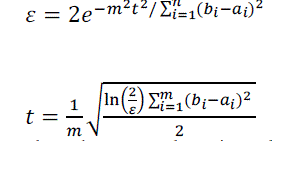 |
| Where t > 0 for ai and bi, the equivalent throughput C can be estimated as follows: |
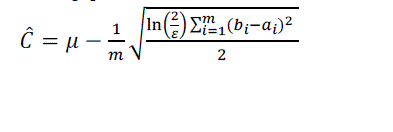 |
ADAPTIVE LAYER SWITCHING ALGORITHM
|
| Since the equivalent throughput ? satisfies (1), a video can maintain QoS of ε, provided that the video bitrate does not exceed ?. Therefore, ? can be used as a threshold to trigger layer switching for the video transmission. In order to avoid substantial and hence objectionable video quality variations, constrain the number of layers l to simply increase or decrease by one, say from the previous level lk to l ?{lk ? 1,lk,lk ? 1}. |
| Let us assume that the current video layer is k . Then, the adaptive layer switching algorithm operates in the context of three scenarios as follows: |
| 1) ?? > 1 ?????? ?? ?? < ????: Since ? is the estimated equivalent throughput, the current video source bitrate Rk cannot ensure the QoS-guarantee of ε for the transmission of the k-layer video. Hence, in order to satisfy the channel bitrate constraint, the number of video layers may reduce according to k ?= k?1, i.e., discard one of the enhancement layers. |
| 2) ?? < ?? ?????? ?? ?? > ????????:?? ?? > ???????? implies that the wireless channel has the capacity to convey the (k+1) -layer video. Therefore, in order to improve the video quality and to beneficially exploit the currently high channel throughput, increase the number of video layers according to k ?= k+1 if k < n, while ensuring that ??(??? ≤ ????????) < ??. |
| 3) Otherwise: maintain the current video bitrate without adjusting the number of video layers. Therefore, the adaptive enhancement layer switching algorithm can be summarized as follows: |
 |
| A. Discussions |
| The entire document should be in Times New Roman or Times font. Type 3 fonts must not be used. Other font types may be used if needed for special purposes. |
| The Figure 2 is applicable to both live and stored video. At the sender side, the compressed video bit-stream is first filtered by the scalar, the operation of which is to select certain video layers to transmit. Then the selected video representation is passed through transport protocols. Before being transmitted to the base station, the bit-stream has to be modulated by a modem (i.e., modulator/demodulator). Upon receipt of the video packets, the base station scales them (i.e., select suitable video representation) and then retransmits them to the estimation through the network. |
| Note that a scalar can distinguish the video layers and drop layers according to importance. The dropping order is from the highest enhancement layer down to the base layer. A scalar only performs two operations: (1) scale down the received video representation, that is, drop the enhanced layer(s); (2) transmit what is received, i.e., do not scale the received video representation. |
| Under this architecture, a bandwidth manager is maintained in the base station. One function of the bandwidth manager is to notify the sender about the available bandwidth of the wireless channel through signaling channel. Upon receiving this information, the rate control module at the sender conveys the bandwidth parameter to the scalar. Then, the scalar regulates the output rate of the video stream so that the transmission rate is less than or equal to the available bandwidth. |
| Another scenario is that the base station notices the sender about the channel quality (i.e., BER). Upon receiving this information, the rate control module at the sender commands the scalar to perform as follows (suppose that the video is compressed into two layers): (1) if the BER is above a threshold, discard the enhanced layer so that the bandwidth allocated for the enhanced layer can be utilized by forward error correction (FEC) to protect the base layer; (2) otherwise transmit both layers. Here, for representations of multiple layers (more than 2), an open problem is: |
| Generally, the attainable video quality is significantly affected by network congestion in the Internet. In case of video streaming over HTTP, any potential network congestion may be relieved by the end-to-end flow control carried out by TCP or a TCP-friendly rate control protocol (TFRCP) at the transport layer. However, this is a basic scheme conceived for packet-transmission rate control, not for video streaming. Our proposed enhancement layer switching scheme operates as an end-to-end rate control at the application layer, which may be viewed as a video rate control scheme designed for adapting the video streaming to the time-varying network conditions. |
| |
| TFRC and Multiple TFRC (MULTFRC) utilize the parameters Round-Trip and the packet drop rate to estimate the achievable transmission rate, which may also be applicable to our proposed scheme. In this letter, a technique of estimating the available throughput: the video content is partitioned into a set of time-bounded segments referred to as chunks. Let Bi and Ti respectively denote the chunk size and the transmission duration (from the first bit of the chunk received by the receiver to the last one received). Then it results have ri = Bi/Ti. In this section, the performance of the proposed adaptive enhancement layer switching algorithm is being characterized. Consider a High Speed Packet Access (HSPA) network [14] relying both on AMC as well as on HARQ. The Channel Quality Indicator (CQI) mapping table of the UE category 10 [15] is applied. According to the specification [16], the Transmission Time Interval (TTI) has 2 ms duration, which facilitates near-real-time HARQ transmission. The maximum number of concurrently communicating users was set to U = 32. In this proposed work the numbers of communicating users are increased more than 32. A Round Robin scheme was applied for scheduling the transmissions of the users. The video sequence used in our simulations is the Sony Demo clip from the Video Trace Library [17] scanned at 30 frame/s. It has one base layer and four enhancement layers. The duration of the video sequence is about 10 minutes. In order to satisfy the tolerable delay constraint of a specific video application, video frames are dropped when their delay exceeded 120 ms. The average Peak Signal-to-Noise ratio (PSNR) and Frame Dropping Ratio (FDR) are used for characterizing the performance of the proposed method. All the results were averaged over 50 independent simulation runs. |
| In Figure 3(a), the average PSNR of the proposed algorithm approaches the highest average PSNR of the conventional fixed layer strategies, because the proposed algorithm has the capability of adjusting the number of enhancement layers according to the affordable network throughput: at a lower network throughput, receiver driven adaptive layer switching algorithm may reduce the number of enhancement layers for achieving a lower FDR, as shown in Fig. 3(b), while keeping the video quality as high as possible. By contrast, at a higher network throughput, it may increase the number of video enhancement layers. |
| Finally, for a fixed number of layers the achievable PSNR is forced to remain low at high channel throughputs. As a benefit, however, transmitting a reduced number of enhancement layers may achieve a lower FDR at a low channel SNRs, as shown in Fig. 3(b). Moreover, having a higher than affordable number of enhancement layers implies a higher video bitrate, which results in more dropped frames at lower channel qualities, as evidenced by Fig. 2(b), which inevitably leads to a low average PSNR. |
| Hence, these results demonstrate that the proposed algorithm is capable of accommodating different channel qualities by controlling the number of enhancement layers without any prior knowledge of the channel quality. A smaller ε leads to a lower equivalent throughput C, hence the number of enhancement layers is also reduced, which inevitably reduces the average PSNR. Hence, having a lower ε implies a more conservative enhancement layer switching algorithm. |
CONCLUSION
|
| In this project work, an efficient adaptive layer switching algorithm has been proposed for scalable video transmission, which is a measurement-driven scheme capable of efficiently operation. The estimated equivalent throughput assists in maintaining the QoS guarantee for video transmission. The receiver end is measured at different channel conditions and the adjustment of video layers has to be done at the video source. |
Figures at a glance
|
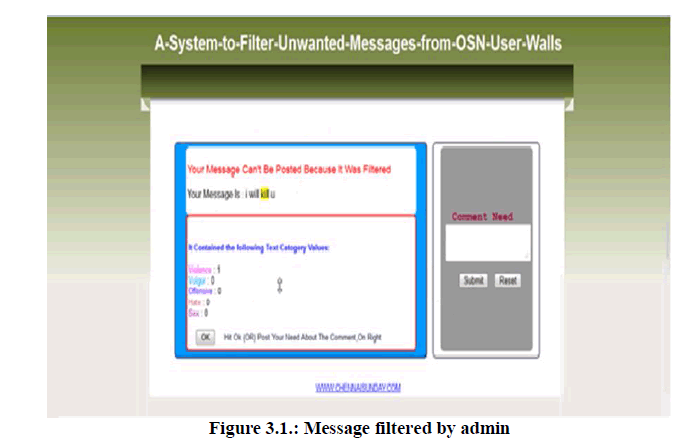 |
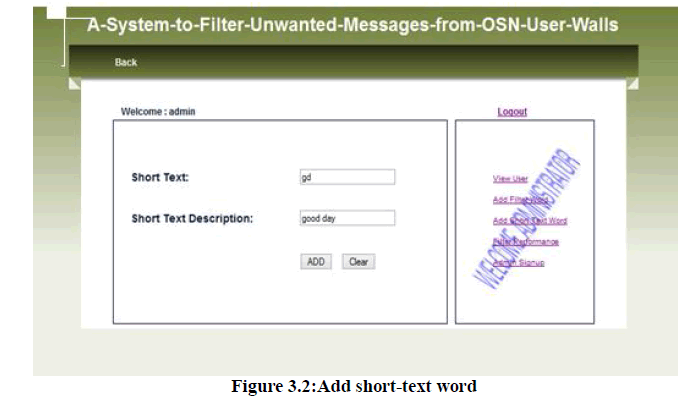 |
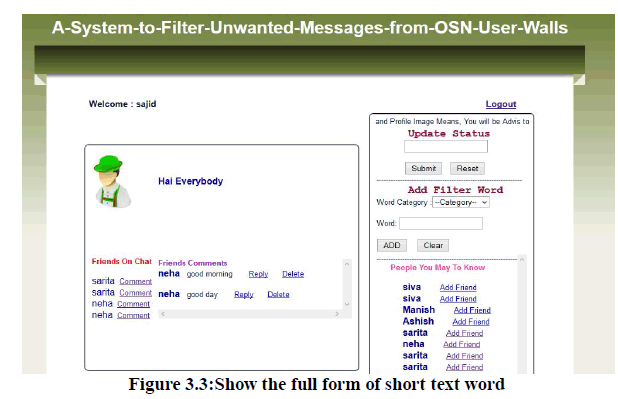 |
| Figure 1 |
Figure 2 |
Figure 3 |
|
References
|
- H. Schwarz, D. Marpe, and T. Wiegand, “Overview of the Scalable Video Coding Extension of the H.264/AVC Standard" IEEE Trans.Circuit Syst. Video Technol., vol. 17, no. 9, pp. 1103–1120, Sep. 2007.
- H. Zhang, Y. Zheng, M. A. Khojastepour, and S. Rangarajan, “Cross-Layer Optimization for Streaming Scalable Video over Fading Wireless Networks,” IEEE J. Sel. Areas Commun., vol. 28, no. 3, pp. 344–353, Apr. 2010.
- J. Ding, D. Deng, T. Wu, and H. Chen, “Quality-aware bandwidth allocation for scalable on-demand streaming in wireless networks,”IEEE J. Sel. Areas Commun., vol. 28, no. 3, Apr. 2010.
- J.W. Huang, H.Mansour, and V. Krishnamurthy, “A dynamical games approach to transmission-rate adaptation in multimedia WLAN,”IEEE Trans. Signal Proccess., vol. 58, no. 7, pp. 3635–3646, Jul. 2010.
- P. Pahalawatta, R. Berry, T. Pappas, and A. Katsaggelos, “Content aware resource allocation and packet scheduling for video transmission over wireless networks,” IEEE J. Sel. Areas Commun., vol. 25, no. 4, pp. 749–759, May 2007.
- M.Mitsumura, H. Masuyama, S. Kasahara, and Y. Takahashi, “Buffer overflow and starvation probabilities for video streaming services with application-layer rate-control mechanism,” in Proc. QTNA, pp. 134–138, Aug. 2011.
- D. Jarnikov and T. Özçelebi, “Client intelligence for adaptive streaming solutions,” Signal Process.: Image Commun., vol. 26, no. 7, pp. 378–389, Aug. 2011.
- R. Pantos, HTTP Live Streaming [Online]. Available: http://tool.ietf.org/id/draft-pantos-http-live-streaming-00.txt
- Transparent End-to-End Packet Switched Streaming Service (PSS) 3GPP, 3GPP TS 26.244 v9.2.0.
- J. Yang, Q. Zheng, H. Xi, and L. Hanzo, “Receiver-Driven Adaptive Enhancement Layer Switching Algorithm for Scalable Video Transmission Over Link-adaptive Networks,” IEEE Signal, Proc., Letters, vol. 20, no. 1, pp. 47-50, Jan. 2013
- TSGR1#17(00)1395 “Adaptive Modulation and Coding (AMC),” Motorola, pp. 1-7, 20th-24th Oct 2000.
- H. Mansour, Y. Fallah, P. Nasiopoulos, and V. Krishnamurthy, “Dynamic Resource Allocation for MGS H.264/AVC Video Transmission Over Link-Adaptive Networks,” IEEE Trans. Multimedia, vol. 11, no. 8, pp. 1478–1491, Dec. 2009
- M. Habib, C. McDiarmid, J. Ramirez-Alfonsin, and B. Reed, Probabilistic Methods for Algorithmic Discrete Mathematics. Berlin, Germany: Springer-Verlag, 1998.
- L. Hanzo, J. Blogh, and S. Ni, 3G, HSPA and FDD versus TDD Net working:Smart Antennas and Adaptive Modulation. Hoboken, NJ: Wiley, 2008.
- Physical Layer Procedures (FDD) 3GPP, 3GPP TS25.214 V6.2.0.
- “R1-02-0675, Revised CQI Proposal,” Tech. Rep.Motorola and Nokia, 2002, 3GPP RAN WG1.
- Video Trace Library, [Online]. Available: http://trace.eas.asu.edu/
|